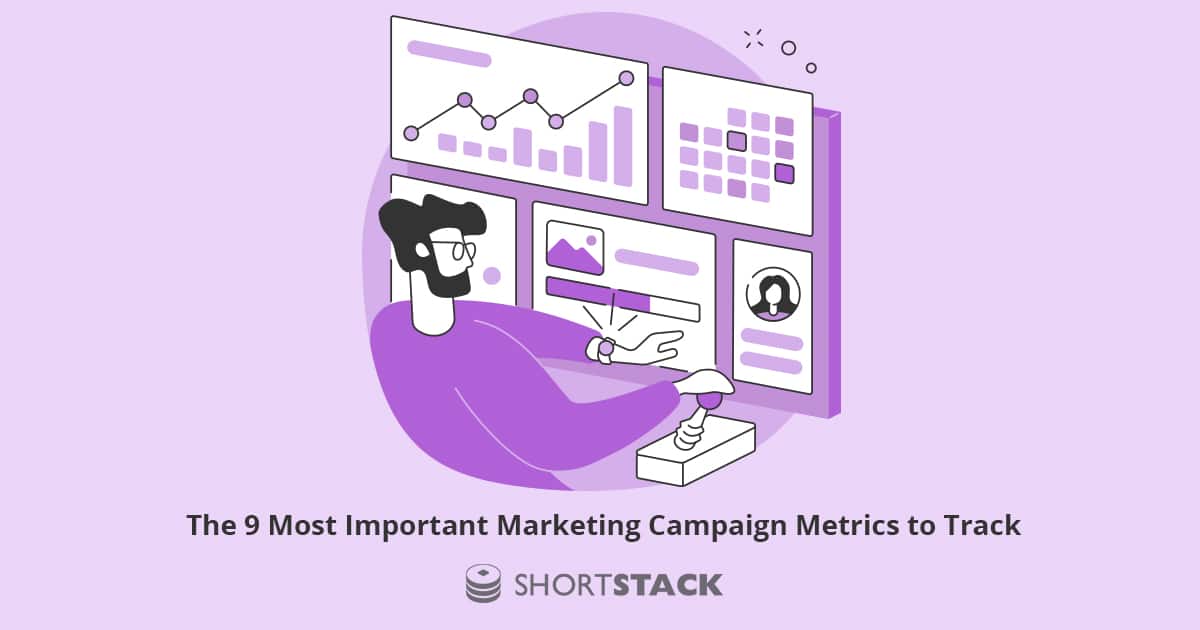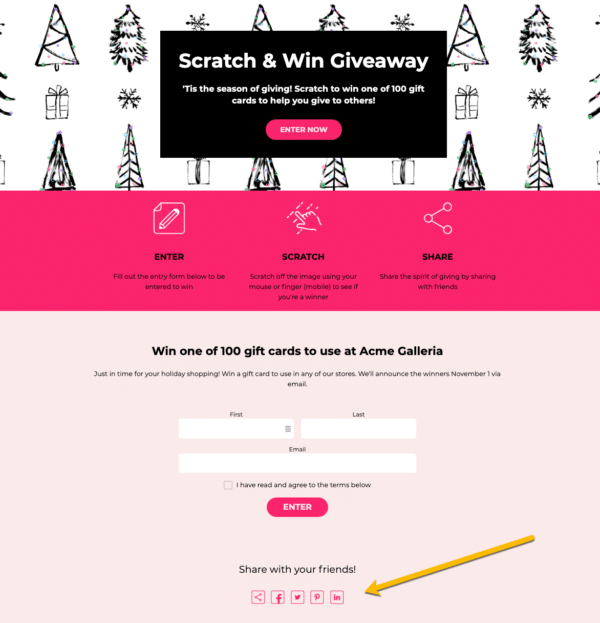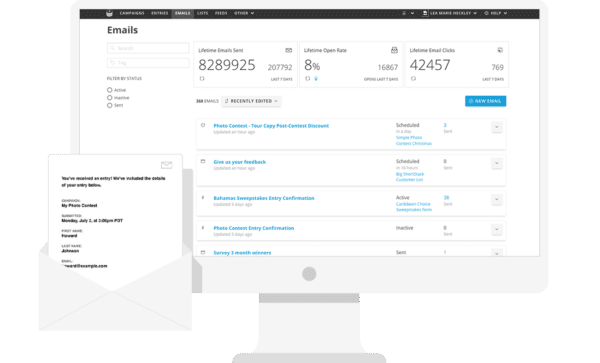The 9 Most Important Marketing Campaign Metrics to Track

This content discusses the importance of tracking and analyzing marketing campaign metrics for better targeting, results, and conversions.
It's easy to get lost in executing a marketing campaign and neglect the most important long-term aspect of its outcomes.The numbers.You may see an intermittent spike in sales, increase in leads, and a general lift in brand awareness, but what does that all mean for the future? How will you get even better results next time? Tracking and analyzing marketing campaign metrics helps strengthen your customer profile and understand what motivates them to take action. It also enables you to tweak campaign elements for better performance in the future. A robust customer profile paired with data-driven campaign decision-making results in targeted innovation, effective product development, improved campaign ROI, and a heightened customer experience. So, what are the most important metrics to track and analyze? This article will look at nine metrics that will help you adapt and optimize your campaigns for better targeting, better results, and more conversions.
#1. Views and Unique Views
When someone visits your campaign landing page, it counts as a view. If that person has never been to that page before, it’s considered a “Unique View. ”By themselves, landing page views don't tell you much about the success of a campaign. However, these metrics become extremely valuable when combined with other numbers, such as form completions or purchase activity. For example, how many times, on average, does a user need to see the landing page to complete a form? Knowing these connections will aid you in setting expectations and ad budgets in the future. They will also create a benchmark that you can aim to improve moving forward to increase conversions.
#2. Traffic Sources
It’s unlikely that all of your campaign traffic will come from one place. People may discover it via search engines, other websites, social media platforms, emails, or offline events (direct traffic). By analyzing where most campaign participants are coming from and determining the highest converting channels, you can focus on the most effective promotional tactics.For example, suppose you receive 1,000 views from both social media and email, yet the email traffic converts into form completions at a higher rate. In that case, you'd be better off investing in email more so than social media for future campaigns.
#3. Form Completions
For most marketing campaigns, the goal is to generate action from participants. This may be a purchase in some cases, but it is the completion of a form most of the time. For example, if you're running a lead generation campaign with a free whitepaper or an interactive experience such as a social media giveaway, the campaign's sole purpose is for people to provide their contact details in exchange for the value you are offering. ShortStack’s Entries Manager makes the analysis of form completions seamless. You can view all form completions in one place, filter, and moderate entries, choose winners and export contact lists in a single dashboard. There's also bonus features such as building targeted lists to remarket to and labeling/tagging entries for categorization.
#4. Devices and Browsers
Much like traffic sources, the devices or browsers that participants use to view your campaign could provide valuable insights. Are people finding your campaign on the run via mobile, or is it predominantly desktop? What browser are they using?Landing pages look and behave differently on various devices and browsers. For example, a button may be easy to click on Google Chrome on a desktop, but be overlapping text or hidden in a hard-to-see position on an iPhone.Of course, you should use best practice multi-device optimization when designing your pages anyway. But you should also analyze the numbers to ensure the devices or browsers with the most traffic have the best user experience.
#5. Clicks
Click-tracking helps you determine which parts of your campaign are generating the most interest from people.For example, maybe an odd number of people are clicking on the 'About' link on your landing page, suggesting they are not familiar enough with your brand to take action. Perhaps a link on your landing page is being clicked a lot, but it detracts from the primary call-to-action, reducing your conversions.Tracking clicks will help you emphasize the most important elements of your campaign landing page and remove distractions.
#6. Social Shares
It may be helpful to determine which social platforms your audience is most active on. You can do this by capturing data about how often and where your campaign has been shared. Especially with interactive campaigns, such as quizzes and contests, the share count is critical to its success. Ideally, participants will share your campaign with friends and family - spreading the word without increasing your ad spend. If people aren’t sharing your campaign on social media, it may be worth diving deeper into why they aren’t and how you could increase shares moving forward. Such as including social sharing icons on the landing page or rewarding shares with additional campaign entries. For example, ShortStack’s landing page templates include social icons as default to encourage participants to share the love! Like this Scratch & Win Giveaway Template:

#7. Date-Specific Data
If you run a campaign for an extended period, you may like to break down the performance data into specific segments. The most obvious way to segment data by time is to look at it monthly. However, you could get even more granular to uncover insights and opportunities.For example, perhaps your campaign performs best on the weekend, during a particular time of the month, or in the evening. This data can be valuable for adjusting your ad spend based on date and time to maximize the ROI of the campaign.
#8. Autoresponder Activity
If you’re collecting email addresses as part of your campaign, which you almost always should, you’ll likely follow up with an autoresponder. Autoresponders are a great way to stay top-of-mind with prospects if they aren’t ready to purchase yet. They’re also helpful to increase a customer’s lifetime value by encouraging multiple purchases.One of the benefits of an autoresponder is that you can collect data, such as opens, clicks, and unsubscribes, and can test or iterate to improve those numbers. You’ll be able to discover which emails are resonating with your audience and which ones need to be changed. You’ll also find out which emails are closing the most deals!

#9. Purchase Activity
An article about marketing metrics wouldn't be complete without purchase activity. As much as views and form completions are nice, bottom-line revenue is what you're striving for. Purchase data that may be valuable from a campaign includes new vs. returning customer purchases, conversion rates, most profitable channels, and any other connection you can draw between purchases and the activity metrics mentioned above. You may also like to analyze average order value, cost of acquisition, return on ad spend, and customer lifetime value to paint a longer-term picture of a campaign's ROI.
Connecting the dots
Each of these campaign metrics is relatively insignificant in isolation. They are only valuable if you can connect the dots and draw meaning from them as a whole.For example, are there commonalities between traffic sources and purchase activity?You may be able to identify the mix of date, time, traffic source, number of touchpoints, and autoresponder interactions with an eventual purchase. Perhaps your highest value customer likes to shop at night, on the weekend, and has typically viewed a landing page three times before handing over their credit card.These leading indicators are extremely valuable when it comes to designing your campaigns and optimizing ROI. ShortStack’s Tracking Widget helps you track all of this data without needing to implement code on your website.




